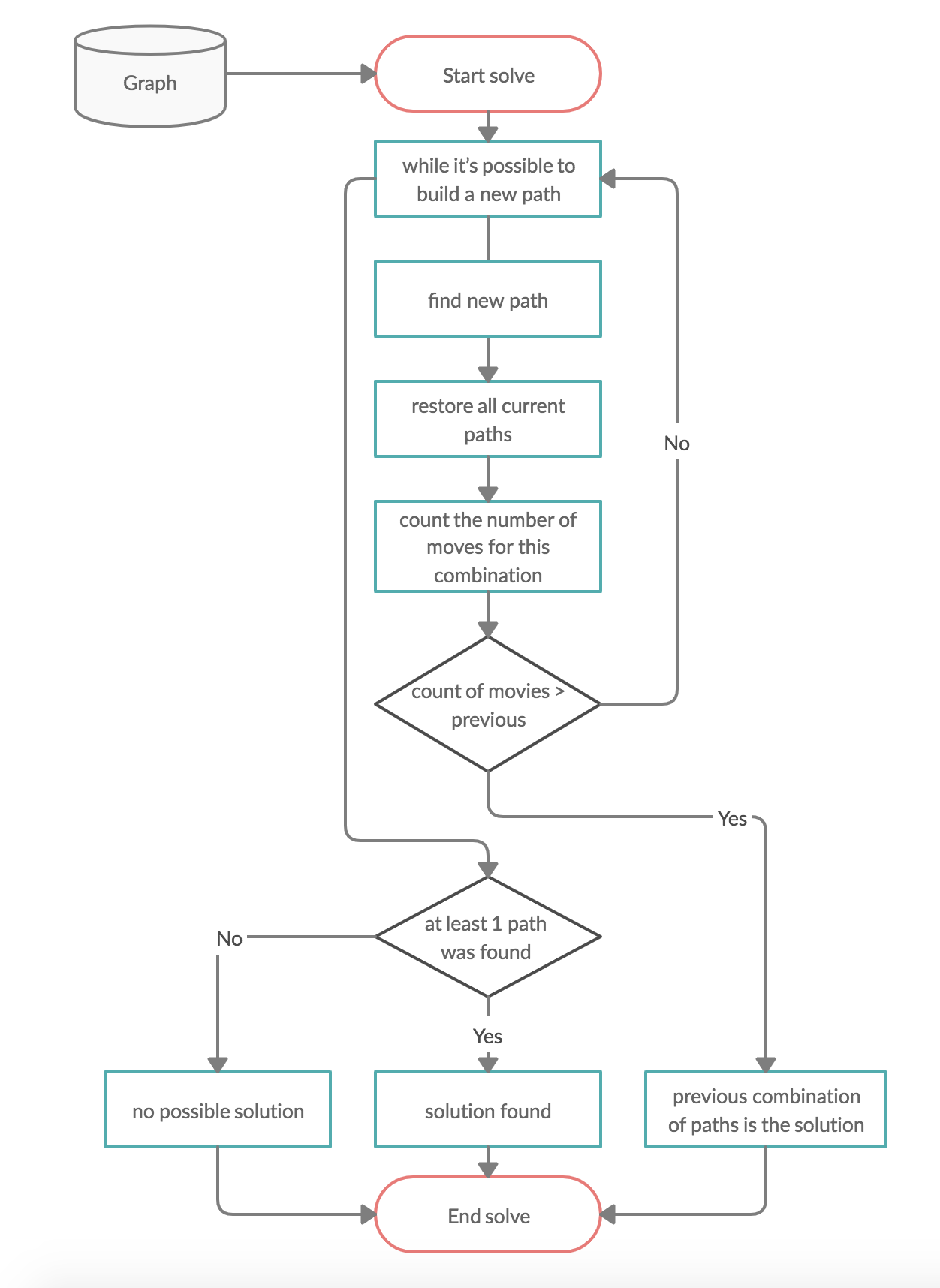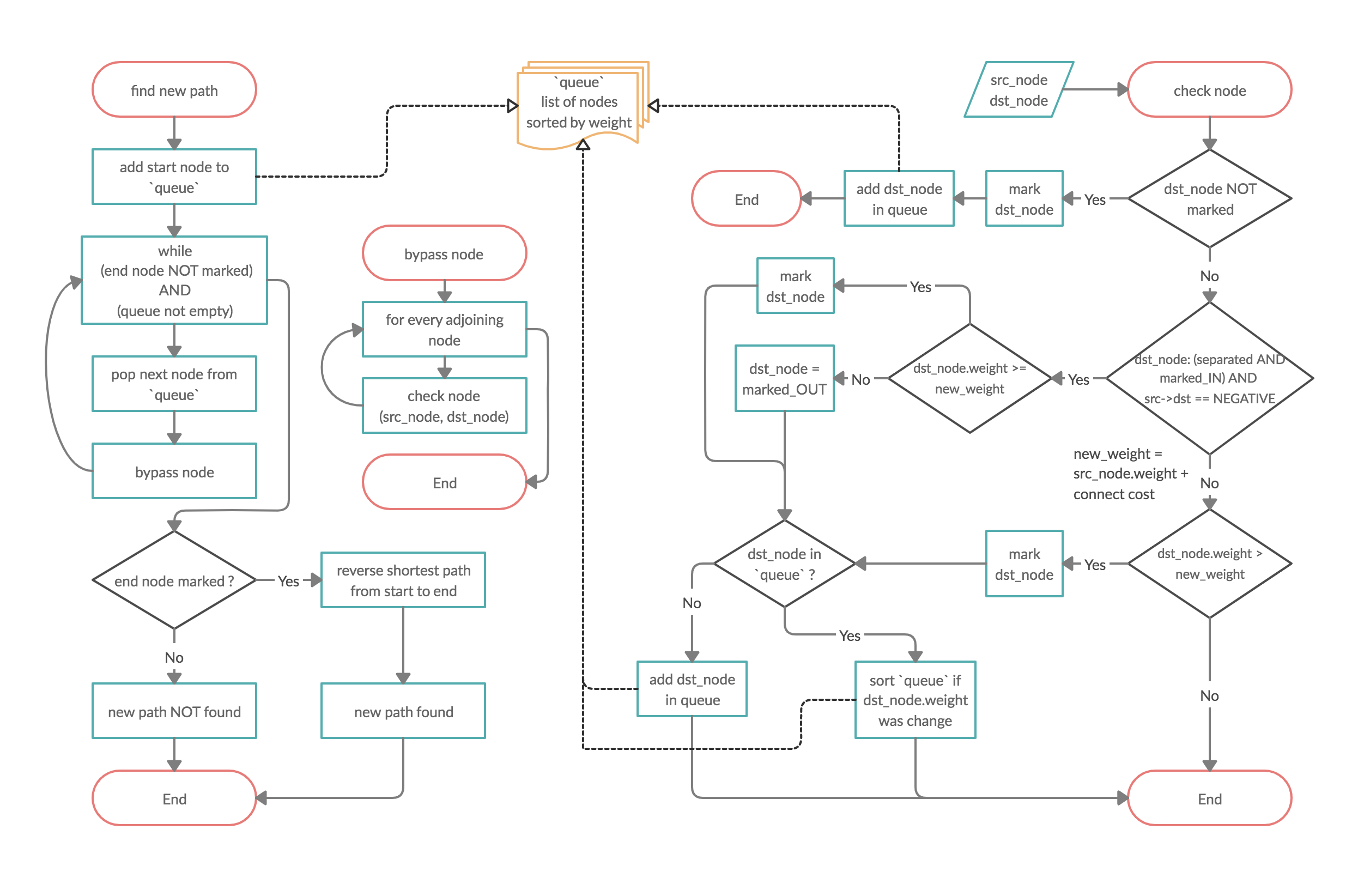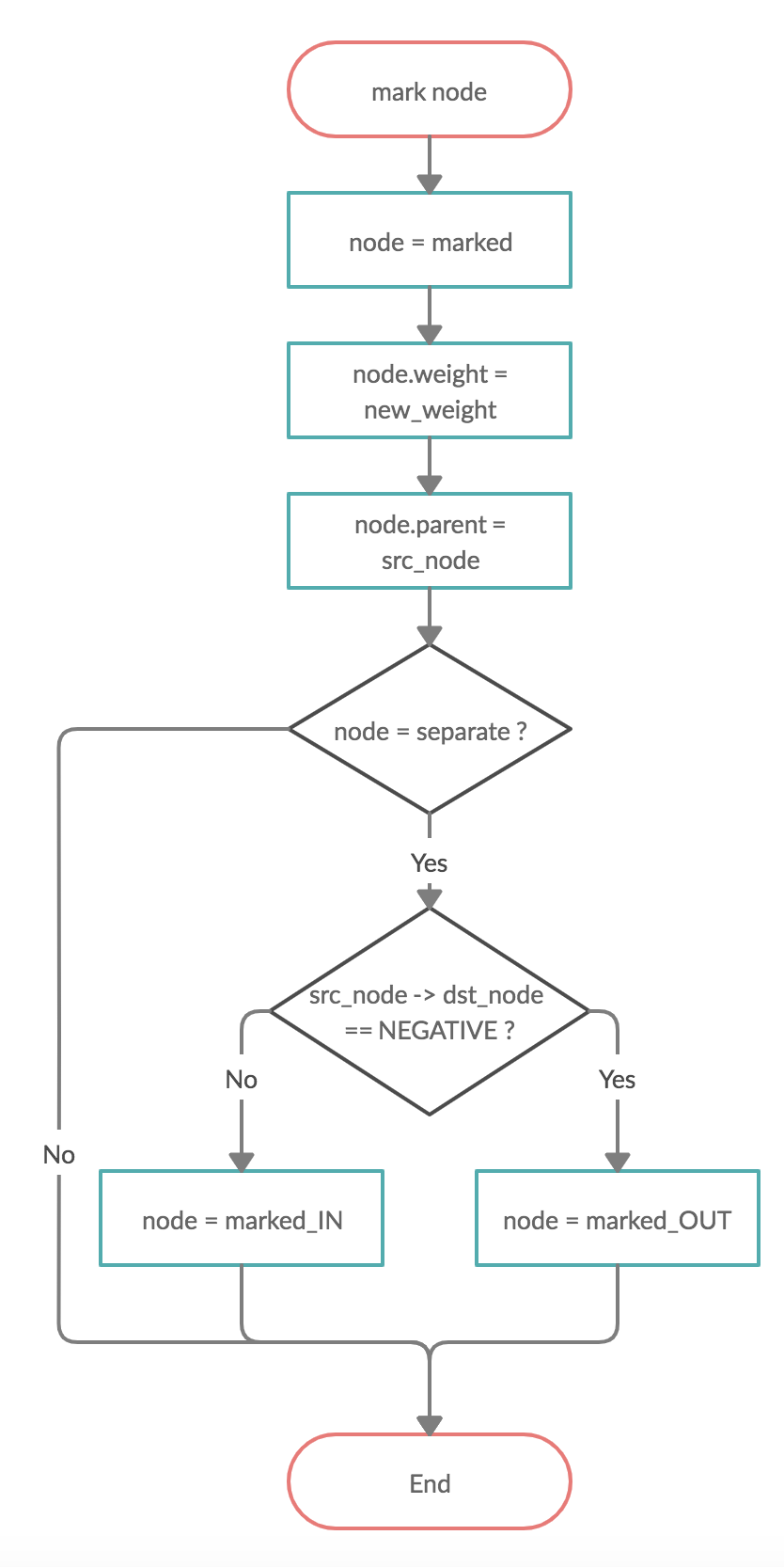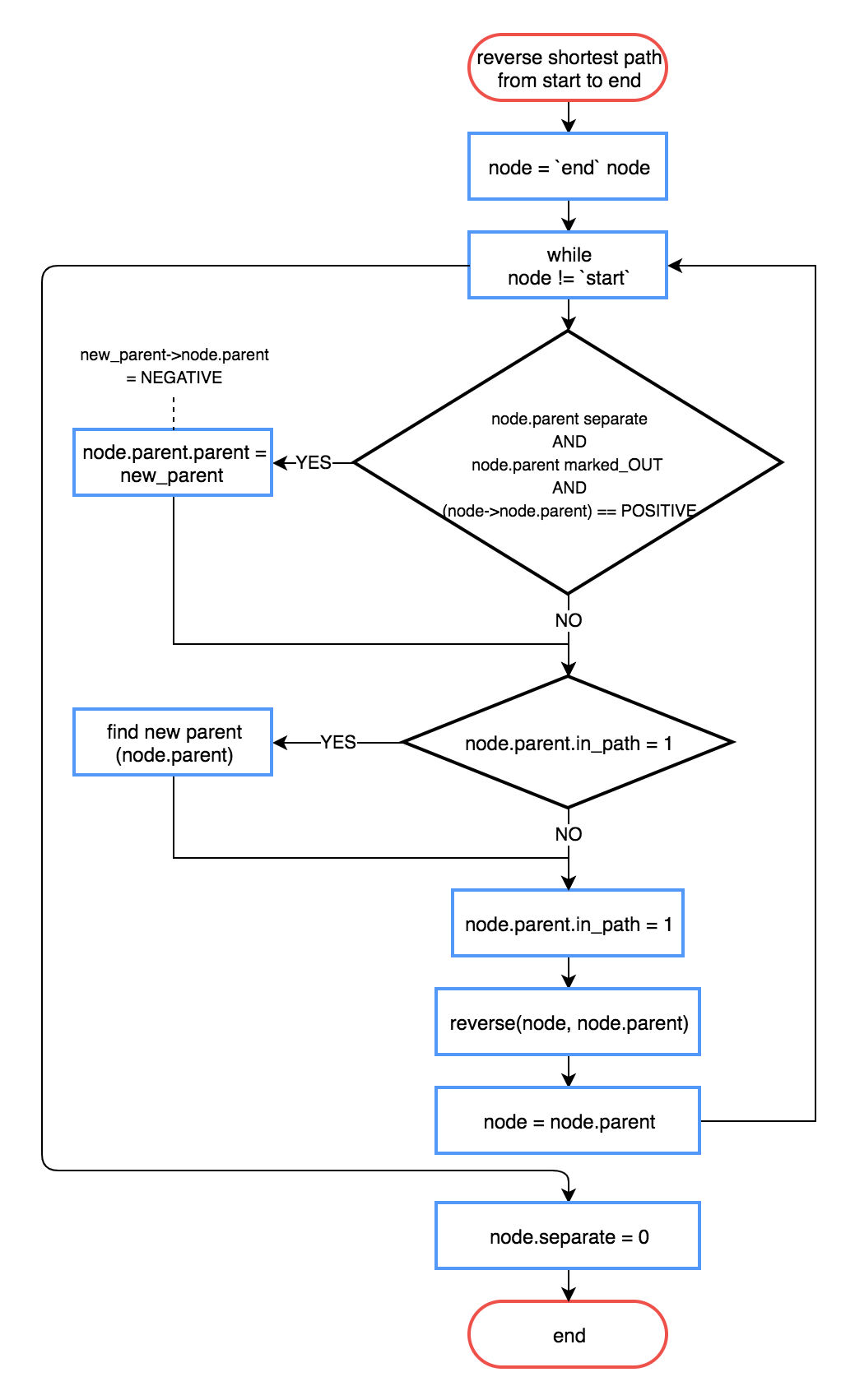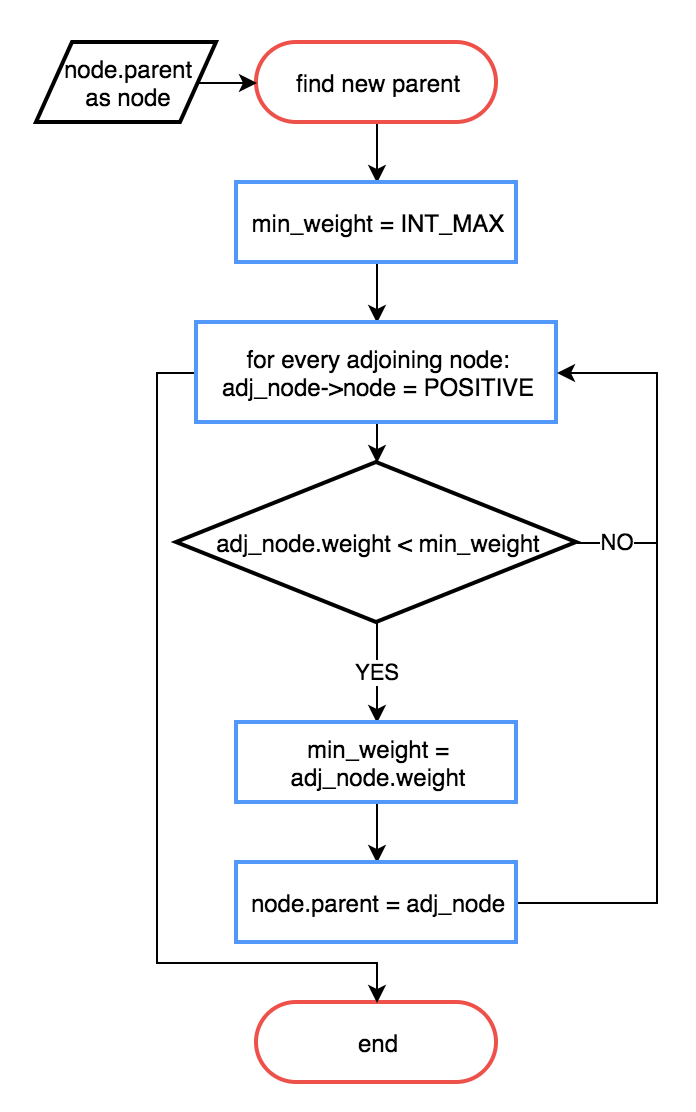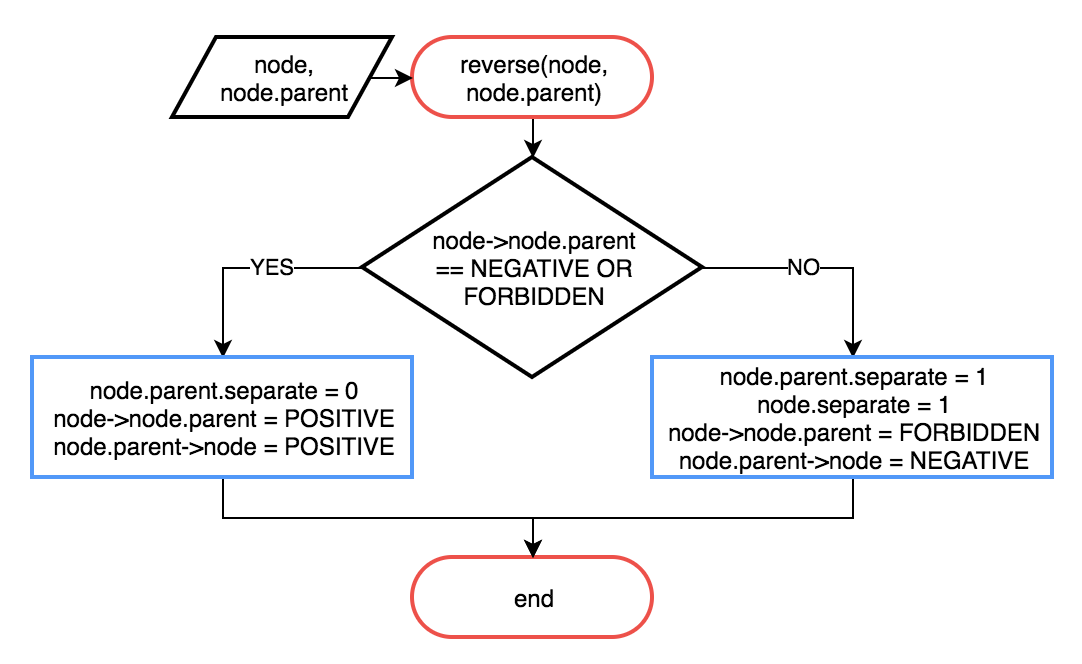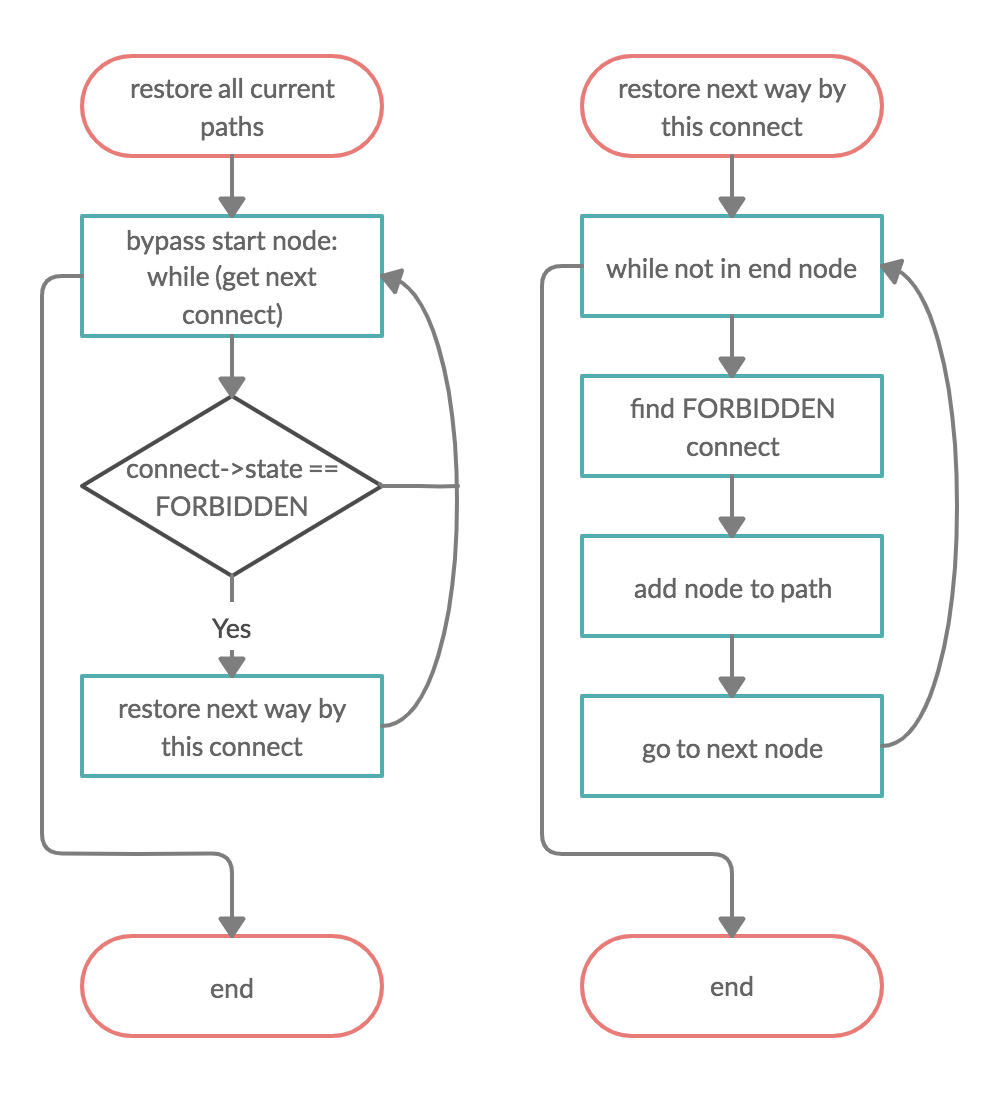-
Notifications
You must be signed in to change notification settings - Fork 0
Algorithm
Ilya Kashnitskiy edited this page Jan 29, 2020
·
4 revisions
If you do not know the basic idea of the Suurballe's algorithm, there is no point in reading further!
To explain the algorithm, I will introduce you to the necessary information for the algorithm about the graph elements with which I will work:
typedef struct s_node
{
int marked;
int separate;
int marked_sep;
int parent;
int weight;
int in_new_path;
} t_node;
# define MARKED_IN 0
# define MARKED_OUT 1
- marked : just a flag. 0 - if we didn't visited this node while traverse, 1 otherwise
- separate : just a flag. 1 - if this node separate, 0 otherwise
In fact, this is already an optimization. Most part of students just create new graph when thew split the rooms, and work with it. But I develop a really fast lemin, so I just use flags.
- marked_sep : just a flag. 1 - if we hit in OUT node, 0 - if IN
- parent : parent node - from which we got to this node
- weight : each node has weight. if we go along the positive path - weight + 1; -1 otherwise
- in_new_path : just a flag. 1 - if this node already a part of new path. 0 otherwise
typedef struct s_connect
{
int state;
} t_connect;
Each connect has its own state:
- POSITIVE - usual and init state
- NEGATIVE - connect from
endtostartafter reverse - FORBIDDEN - connect from
starttoendafter reverse
